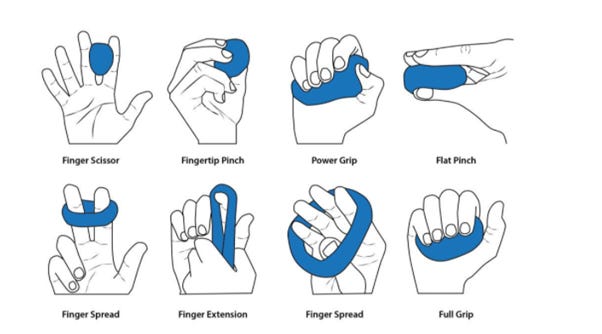What it is
Isometric handgrip is a static squeeze you hold at a modest intensity. You are not lifting a weight. You are gripping and maintaining a steady effort. The technique has two useful effects. In the moment, it can settle your nervous system by engaging baroreflex pathways that increase vagal tone. Over weeks, the training protocol can lower resting blood pressure in many people.
What the research shows
Multiple trials and reviews report reductions in systolic and diastolic blood pressure after structured handgrip training. A common prescription uses four two-minute squeezes at roughly thirty percent of maximal voluntary contraction with one minute of rest, three sessions per week for eight to ten weeks. The effect size varies, but the signal is consistent across protocols and populations.
Why it works
Sustained low-intensity contraction raises pressure at the receptors in your carotid arteries. Your baroreflex responds by dialing down sympathetic drive and allowing more parasympathetic input. Studies measuring baroreflex sensitivity during handgrip confirm this shift toward better autonomic balance.
A quick autonomic reset you can run today
If you feel wired or stuck in “functional freeze,” use a short sequence that lowers arousal without leaving you groggy. Grip at about one-third of your maximum for sixty seconds. Keep breathing. Add a brief cool splash to the face to trigger the dive reflex, which boosts vagal activity and blunts the stress response. Follow with one minute of slow breathing around six breaths per minute. You should feel more settled within minutes.
How to do the full training protocol
Find your “max” safely. Squeeze a handgrip device or a rolled towel once as hard as you comfortably can. That is your 100 percent.
Work at roughly 30 percent. Hold the squeeze for 2 minutes. Breathe steadily.
Rest for 1 minute. Switch hands.
Complete 4 total holds per session. Aim for 3 sessions per week. Track how you feel and, if relevant, track resting blood pressure with a validated monitor.
Safety notes
Isometric work can raise blood pressure during the hold. Breathe. Do not perform Valsalva. Stop if you feel dizzy or unwell. People with uncontrolled hypertension, significant cardiovascular disease, or pregnancy should talk to a clinician before starting. Choose seated positioning if balance is a concern.
When to use it
As a quick downshift before a meeting or after a stressful call.
As a short “thaw” when you feel shut down but need to re-engage.
As a simple training block to support cardiovascular health over 6 to 10 weeks.



